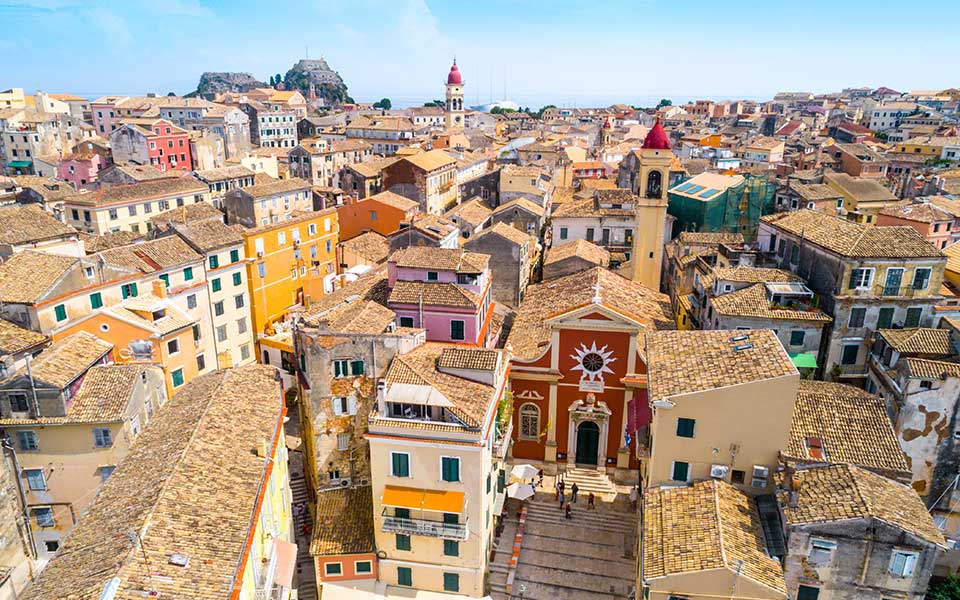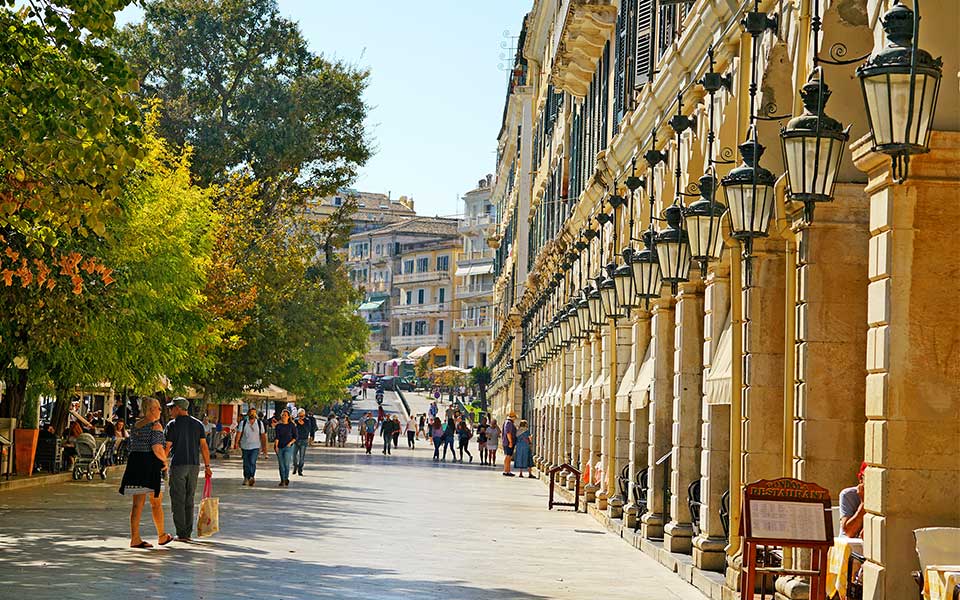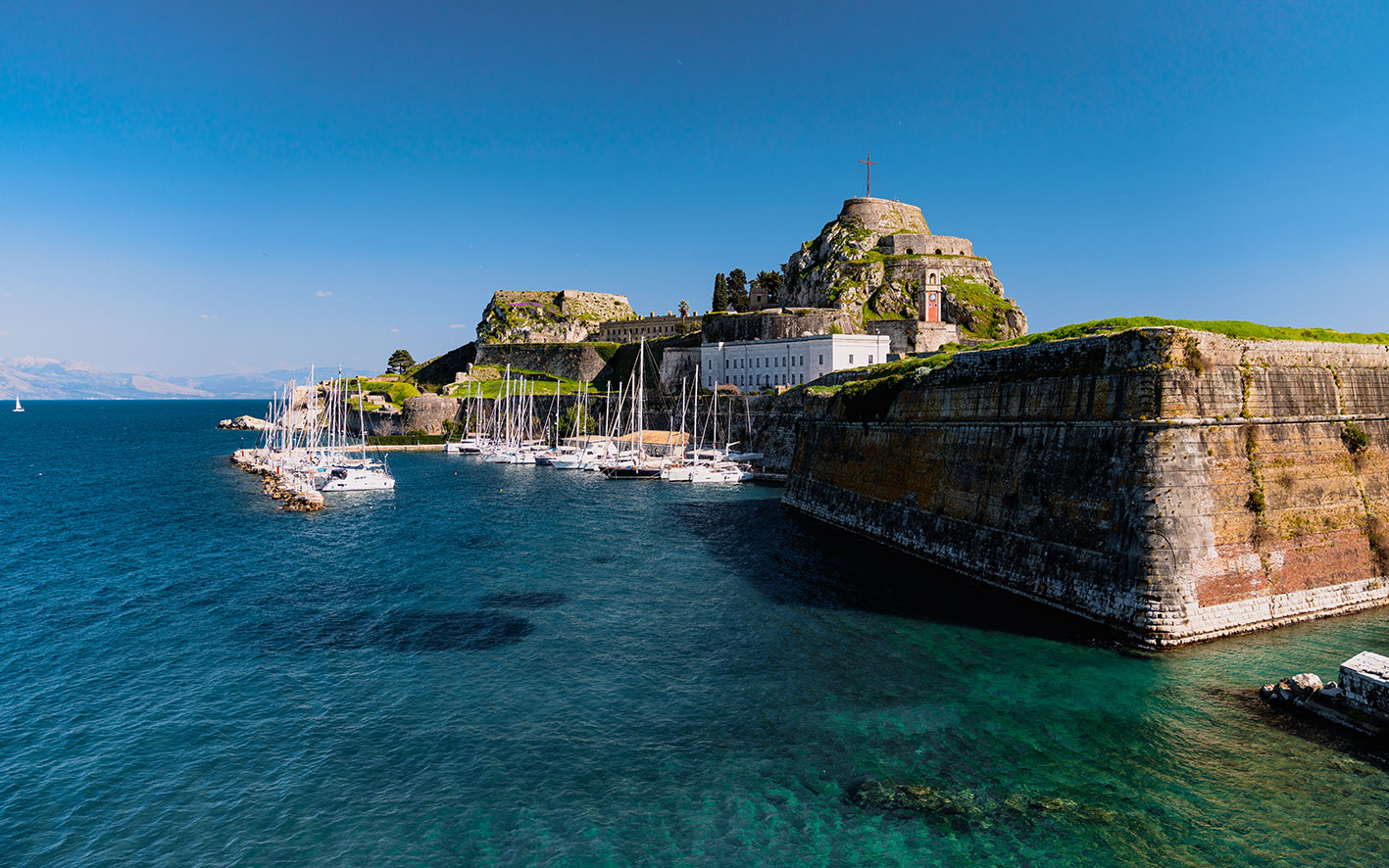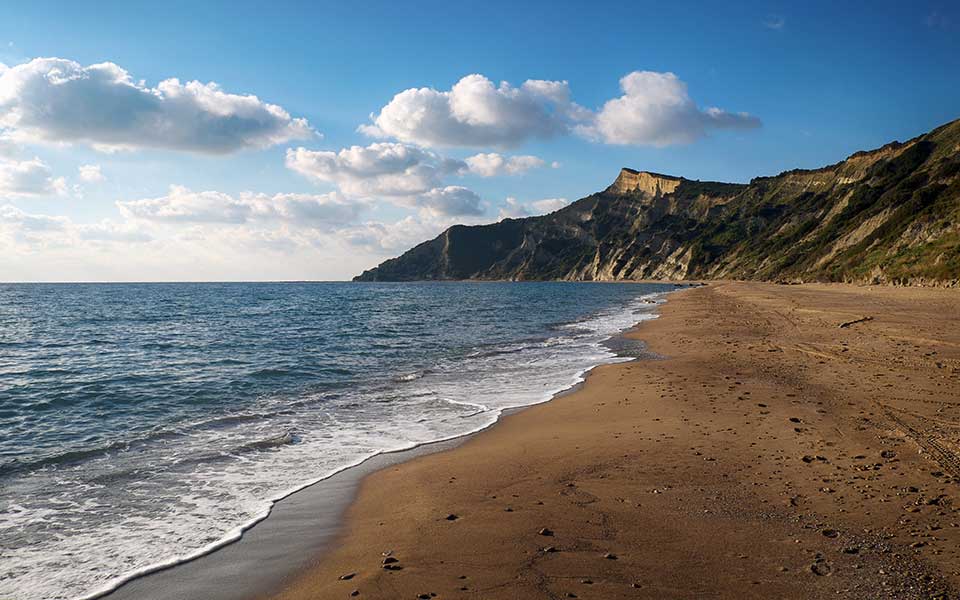On Kefalonia, Winemakers Adapt to Rising Temperatures
Climate change brings water scarcity and...

One of Greece's most popular tourist destinations, Corfu's Old Town is renowned for its rich and diverse architectural heritage.
© Shutterstock
Corfu is one of the most popular Greek tourist destinations. Every summer, the Ionian island fills up with travelers, both Greeks and foreigners, who push it to its limits. Indeed, Corfu would serve as a good case study for the phenomenon of over-tourism, a discussion that has now opened for all parts of Greece inundated with visitors during the summer months. Every year, its road network proves inadequate for the huge volume of visitors, the island’s water is not potable anyway, while electricity supply problems are also noticeable. However, visitors do not seem discouraged; on the contrary, they choose to come back year after year. The reason is the wealth of experiences and variations that Corfu offers; its architecture, natural landscape, attractions, its beaches – everything that makes Corfu so unique.
Of course, no one can bypass the Old Town, no matter how difficult it is to find parking. It’s better to explore it early in the morning or late at night to avoid both the heat and the crowds. Designated as a UNESCO World Heritage Site since 2007, the Old Town consists of different districts connected by the famous “cantounia,” the narrow winding alleys.

The districts of the Old Town, a UNESCO World Heritage Site, are connected by narrow, winding alleyways known as "cantounia."
© Shutterstock
Start from Cabielo, the oldest district: this is where the Instagram-worthy photos of clothes hung out to dry above the “cantounia” that resemble Venice come from. As its name implies (“Cabielo” means small square), here you will see many small squares, Venetian buildings, and “volta” (what they call arched passageways in Corfu). In Kremasti Square (also known as Lili Desila Square), the Venetian well dates back to 1699 and is one of the nine water reservoirs built outside the fortifications by the Venetians to combat water scarcity. In the marble octagonal structure you will find decorative elements, animal depictions, and an inscription that mentions the name of the donor, the island benefactor, Antonis Kokkinis.
Less aristocratic but equally atmospheric is the Jewish quarter of the Old Town. The Jewish Synagogue is a Venetian Baroque building, while a little further down in Neo Frourio Square you will see the Holocaust Memorial, which was inaugurated in 2001. The four naked figures depicting the Jewish family are the work of sculptor Georgios Karachalios.
Continue your exploration of the Old Town by passing through the Old Town Hall Square. The building dating from 1691 was once a meeting point for Venetian nobles, later housing the San Giacomo opera house and then serving as the seat of the Municipality. From here, following small alleys, you will reach Spianada and Liston, across from the Old Fortress. If you turn left, you will find yourself at the Corfu Museum of Asian Art housed in the Palace of St. Michael and St. George, which was built for Sir Thomas Maitland, the British Lord High Commissioner of the Ionian Islands. If you turn right, you will walk by the sea at Garitsa Bay and reach the Mon Repos Estate and its beautiful gardens.

The old fortress of Corfu on the peninsula that borders the eastern edge of the city.
© Nicholas Mastoras
In addition to the Venetians, the island has been influenced in various ways by Ioannis Kapodistrias, who was born in Venetian-ruled Corfu in 1776, and began his political and diplomatic career here. On the hill of Koukouritsa, above the city’s hospital on the road to the north, you will find the Kapodistrias Museum – Kapodistrian Studies Center located on the Kapodistrias family estate (Evropouli, Tue-Sun 10:00-16:00, Tel. (+30) 26610.324.40). The biography of the first governor of Greece, as well as the history of Corfu itself, unfolds through objects, portraits, books, documents, and memorabilia. The rich gardens of the estate are ideal for a leisurely stroll in the shade of the trees, while events such as musical evenings and screenings are often organized there.
Another interesting walk in the town is towards Kanoni and Panagia Vlacherna. Leave the bustling cafes perched on the hill behind and head towards the narrow strip of land that connects Kanoni with Perama. There you will find yourself right beneath the point where airplanes pass to take off and land at Corfu Airport, located just behind. The location is safe, as planes fly at a height of several meters, offering an opportunity for plane-watching.

Arkoudilas Beach, in the far south of the island, boasts spectacular views and crystal water.
© Shutterstock
Along the entire coastline of Corfu, from north to south and from east to west, there are dozens of beaches, small and large, most of them with facilities. Those near the city are the most crowded, and the beaches in the northern and central parts of the island are also often bustling with people. Traditionally, those around Paleokastritsa and Benitses are filled with foreign and Greek visitors. The further south you go, the more likely you are to find tranquility. Especially on the western coastline, from Halikouna and below, the beaches are so spacious that you can still enjoy your swim even if they are quite busy. Megas Horos, Gardenos, and Arkoudilas beaches all feature fine sand, minimal or discreet facilities with umbrellas and sunbeds in limited areas, and crystal-clear waters.
In just its second year, the Corfu International Festival has already made its mark on the island’s rich cultural scene. Spanning six months, from June to November, it features a multitude of events, from exhibitions and concerts to theatrical and dance performances. The festival utilizes many different venues in Corfu, from the Old Fortress and various churches to museums and squares.
All three of the island’s philharmonic orchestras participate in the events, while Dionysis Grammenos, a clarinetist and orchestra conductor from Corfu, is the festival’s artistic director. Highlighting the August events is the exhibition of renowned street artist Cacao Rocks (Jason Megoulas) at the Municipal Art Gallery, while in September, works by the pop Greek-Egyptian artist Amanda Galal will be presented at the Ionian Parliament.
Additionally, September will feature plenty of jazz music in the island’s streets and squares, as various trios and quartets will take over public spaces to showcase their music. The Festival is organized by the Municipality of Central Corfu and Diapontian Islands, under the auspices of the Ministry of Culture and Sports, the Ministry of Tourism, and the Greek National Tourism Organization.
The real surname of Ioannis Kapodistrias was Vittori, which was gradually changed to Kapodistrias, indicating his family’s place of origin. They came to Corfu in the 14th century from the city of Capodistria, in present-day Slovenia.
Above the village of Pelekas you’ll find the Kaiser’s Observatory, an iron platform on a cliff that offers fantastic views over central Corfu and the sunset.
The most beautiful view of Paleokastritsa Bay can be enjoyed from the village of Lakones, located 6 kilometers to the north.
Dionysios Solomos spent the last 29 years of his life in Corfu. There is a museum dedicated to his work in the Mouragia area, where the poet lived.
Located 32km north of the city is the village of Nymfes. Just outside the settlement are the Nymfes Waterfalls, featuring less water during the summer and more in the spring and autumn.
Climate change brings water scarcity and...
From Santorini sunsets to ancient ruins,...
Explore Corfu’s once-forgotten vineyards and discover...
With its beautiful olive groves, emerald...